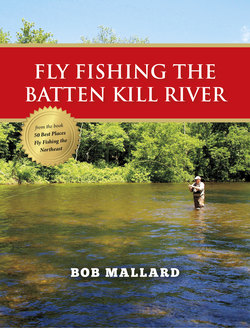Читать книгу Fly Fishing the Batten Kill River - Bob Mallard - Страница 3
Оглавление23 . Batten Kill River
Location: Southwestern Vermont, about a 1-hour ride from Albany, New York; a 2½-hour ride from Burlington, Vermont; a 3½-hour ride from Boston, Massachusetts; and a 2½-hour ride from Manchester, New Hampshire. Full-service airports are available in all four cities.
The Batten Kill in Vermont is arguably the most famous trout river in New England—and also one of the most famous trout rivers in the Northeast. Its reputation as a premier trout fishery is both longstanding and nationally known. Most fly fishers have at least heard of the Batten Kill. Many have read about it. The Batten Kill is to Vermont what Letort Spring Run is to Pennsylvania, and the Madison is to Montana.
In the mid-1850s, Charles F. Orvis founded his retail namesake on the banks of the Batten Kill in the town of Manchester, Vermont. His fly rods and reels soon became popular with anglers near and far. In the mid-1960s, the business was purchased by the Perkins family, who still own it today. Now a veritable retail giant, Orvis is to the town of Manchester what L.L. Bean is to the town of Freeport, Maine. Fly-fishing legend Lee Wulff (1905–1991) also called the Batten Kill home for a time, residing on its banks just over the border in New York.
Today, Manchester is a four-season tourist destination. Anchored by the Orvis flagship store, the area boasts a lodging, restaurant, and shopping infrastructure that rivals anything found in rural New England. It is also the
home of the American Museum of Fly Fishing. As a result, the Batten Kill is that rare fly-fishing destination where a fly fisher can take their non-fly fishing significant other, or the entire family—there truly is something for everyone here.
Nestled in the foothills of southwest Vermont’s Green Mountain, the Batten Kill is the quintessential New England freestone trout river. Its idyllic rural setting represents what most people think of when they envision classic New England. Sprawling dairy farms, rustic
covered bridges, and small white country churches add to the natural beauty of the river, valley, and surrounding hills.
